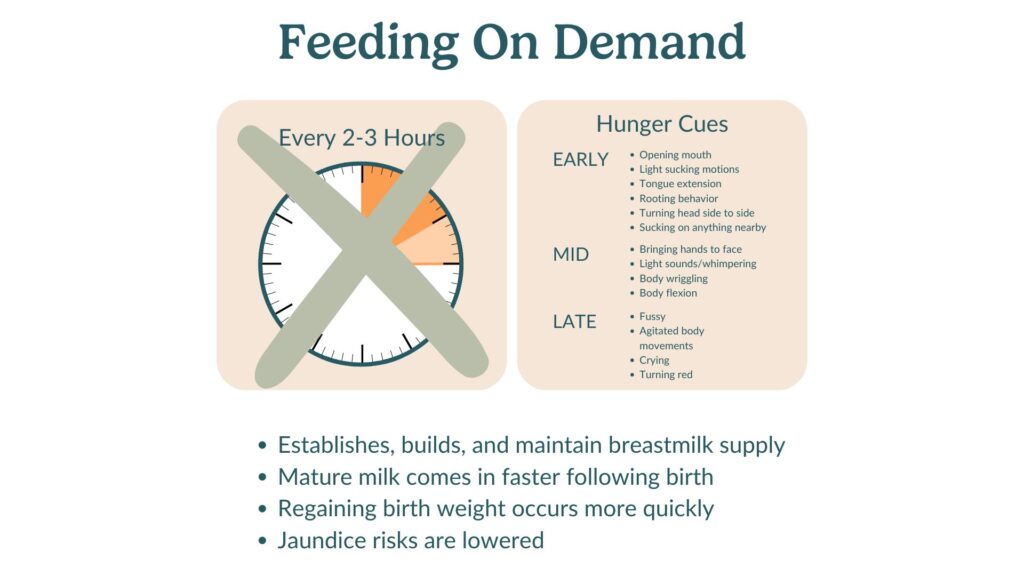feeding on demand

Feeding on demand
Feeding on demand, also known as responsive feeding, involves feeding your baby whenever they show signs of hunger, rather than following a strict schedule. This approach helps make sure your baby gets enough nutrition and supports their natural feeding rhythms.
Understanding and managing feeding on demand can promote healthy growth and development for your baby. Learn more about responsive feeding.
What to watch out for
It’s important to recognize your baby’s hunger and fullness cues and understand how to respond appropriately. Here are some considerations and tips:
Hunger cues
- Early cues: Your baby may start to move their hands to their mouth, make sucking motions, extend their tongue, or root (turn their head towards the breast or bottle when their cheek is stroked).
- Mid cues: Your baby may bring their hands to their face, make light sounds or whimper, and show body wriggling or flexion.
- Late cues: Crying is a late hunger cue. It's best to try to feed your baby before they reach this stage, as it can be harder for them to latch on properly when they are upset.
Fullness cues
- Slowing down: Your baby may slow down their sucking and seem more relaxed.
- Turning away: Your baby may turn their head away from the breast or bottle.
- Losing interest: Your baby may start to play or look around instead of focusing on feeding.
- Sealing lips: Your baby may keep their lips closed when offered more milk or food.
Tips for managing feeding on demand
- Observe closely: Pay attention to your baby’s signals to determine when they are hungry or full.
- Stay flexible: Be prepared to adjust your feeding routine based on your baby’s needs and cues.
- Create a calm environment: Make feeding times peaceful and free from distractions to help your baby focus on feeding.
- Comfort measures: Offer comfort and reassurance if your baby becomes upset or frustrated, especially if you miss early hunger cues.
Physical limitations or health circumstances
Certain conditions can affect how easily you can recognize and respond to feeding cues:
- Premature birth: Preemies may have subtler feeding cues and may need more help to establish effective feeding patterns.
- Medical conditions: Babies with certain medical conditions may have different feeding behaviors or require special feeding techniques.
- Feeding difficulties: Babies with latch issues, tongue tie, or other feeding challenges may show different or more subtle cues.
Other terms
Understanding related terms can help you better manage feeding on demand and related feeding practices:
- Rooting reflex: The natural instinct that causes a baby to turn their head towards a touch on their cheek, indicating readiness to feed.
- Latch: The way your baby attaches to your breast. A good latch is important for effective breastfeeding.
- Cluster feeding: Periods when a baby feeds more frequently over a few hours, often in the evening.
- Growth spurts: Times when your baby’s growth accelerates, leading to increased hunger and more frequent feeding. Learn more about growth spurts.
- Lactation consultant: A professional who can provide support and guidance on breastfeeding and feeding issues.


